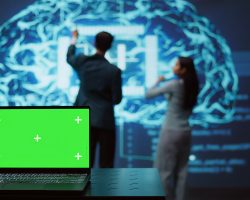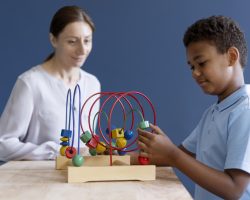Could You or a Love One Have NVLD?

Excerpt from the new book Misnamed, Misdiagnosed, Misunderstood; Recognizing and Coping with NVLD from Child hood through Adulthood
Throughout my childhood and early adult years, my parents, teachers, friends, and others would get mad at me for the things I did without knowing any better. Thankfully, before my diagnosis, I had figured out ways to not only cope but remediate some of my difficulties, which I’ll talk about later on in the book.
People were often puzzled by my responses and reactions, which seemed off base compared to what actually happened or to what was being communicated. This led them to think I was not listening. Much later, my parents understood and felt bad for not knowing I wasn’t intentionally misbehaving. The root cause was my inability to interpret and process nonverbal communication.
Just like you can’t read without learning the alphabet, you can’t understand what others are communicating without interpreting nonverbal cues. Reading nonverbal communication isn’t a subject taught in school. It’s assumed that most people learn nonverbal and social communication automatically and intuitively through visual observation and role-modeling of others, a process that begins in early childhood and continues throughout the school years.
One of the things I really struggled with was reading facial expressions that were neutral—also referred to as a “resting face”—and showed very little to no emotion. Unlike my peers, I wasn’t able to intuitively and effortlessly gauge a person’s mood, the setting, or the situation and adjust my behavioral responses accordingly. My mind was flooded with endless questions I couldn’t answer. Did I do something wrong? Are they mad at me? Why am I being ignored? Am I wanted here? Should I stay or leave? What happened? What did they mean when they said that? What should I have done instead?
When I couldn’t figure out what had happened or what was expected of me, I assumed I was responsible for the feelings of others and blamed myself. It was easier to withdraw socially than to be misunderstood. It’s like being told the color you see as red is blue. I lived with chronic anxiety, feeling as if the ground beneath my feet was unstable and shaky, as if I were walking on Jell-O.
Many times, when I asked my mother if she was mad at me, she would say, “No.” After some time passed and I still couldn’t figure out what was going on, I would ask again, “Are you sure you’re not mad at me?” This cycle would repeat itself. Each time, I would change the words, but, essentially, I was just asking the same thing over and over again in different ways. When she asked me, “Why do you think I’m mad?” I would give her a list of reasons: “You’re not talking to me; you sounded angry; you said this, or you didn’t say that…” I could be relentless and get on her last nerve until she was at her wit’s end! When she finally reached her breaking point, she would yell at me to stop asking her. Once I understood she was not upset about me or about a specific issue, I’d calm down.
To help yourself or your child, role-play a conversation where you prepare the person you will be talking to in advance by saying, “I process language differently so I may need to stop you when you are in the middle of speaking to be sure I comprehend what you’re saying or to clarify by asking you questions. You may feel as if I am not listening or am being rude. Be assured it’s none of these things. I just want to make sure we understand one another so I can respond appropriately.”
Reflective listening is another tool that can be used for neurodivergents (those think, learn, and do things differently) than neurotypicals (the majority of the population who communicate in the same way) to better understand each other.
Excerpt from my new book Misnamed, Misdiagnosed, Misunderstood; Recognizing and Coping with NVLD (nonverbal learning disorder) from Childhood through Adulthood. If you think you or a loved one may have NVLD or to learn more of my strategies for coping, read more …
#nvld #nonverballearningdisorder #nonverballearningdisability #learningdisabilities #aspergers #neurodivergent #autism #adhd #neurodiversity #anxiety #inclusion #adhdawareness #specialneeds #adhdsupport #adhdwomen #adhdmom
Linda Karanzalis, Board-Certified Cognitive Specialist is the author of Misnamed, Misdiagnosed, Misunderstood, a new book on Nonverbal Learning Disorder and other brain-based challenges.
Dr. Ned Hallowell, a psychiatrist, world-renowned expert on ADHD, and the New York Times best-selling author of Driven to Distraction says, “Linda’s book is vivid, compelling, full of heart and fresh understanding. Karanzalis replaces suffering with clarity and triumph for the millions of people with NVLD.”
Linda, who has NVLD and ADHD, has worked for more than 25 years with individuals of all ages with NVLD, ADHD, learning disabilities, and those on the autistic spectrum. As an author, podcaster, presenter, learning specialist, and ambassador for the NVLD Project, she provides validation, awareness, solutions, strategies, and, most importantly, compassion to the millions who live with neurodiversity. Find out more about her story and book at www.lindakaranzalis.com.
Follow Linda Karanzalis through her social media accounts:

Join the NVLD and NeuroDivergent Facebook Support Group
 Linda Karanzalis, MS
Linda Karanzalis, MS
Linda Karanzalis, MS, is a former special education classroom teacher with over 25 years of experience in the areas of learning disabilities, ADHD, social-emotional learning, social skills training, and behavior management














